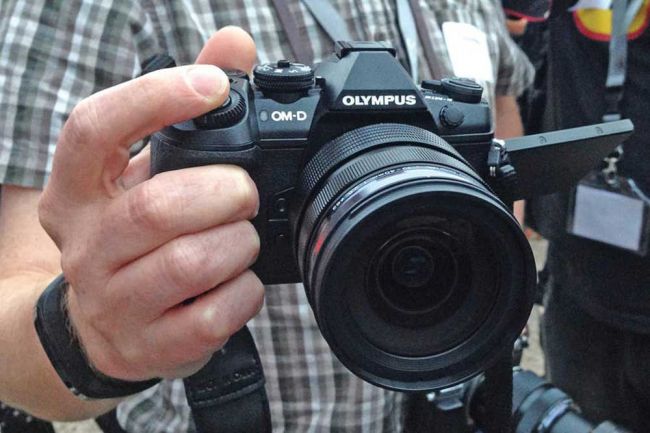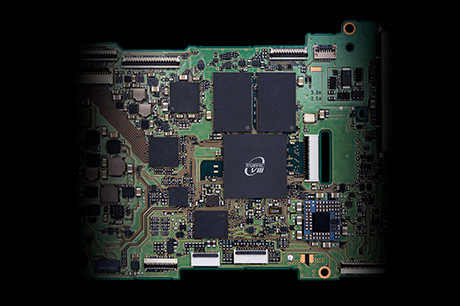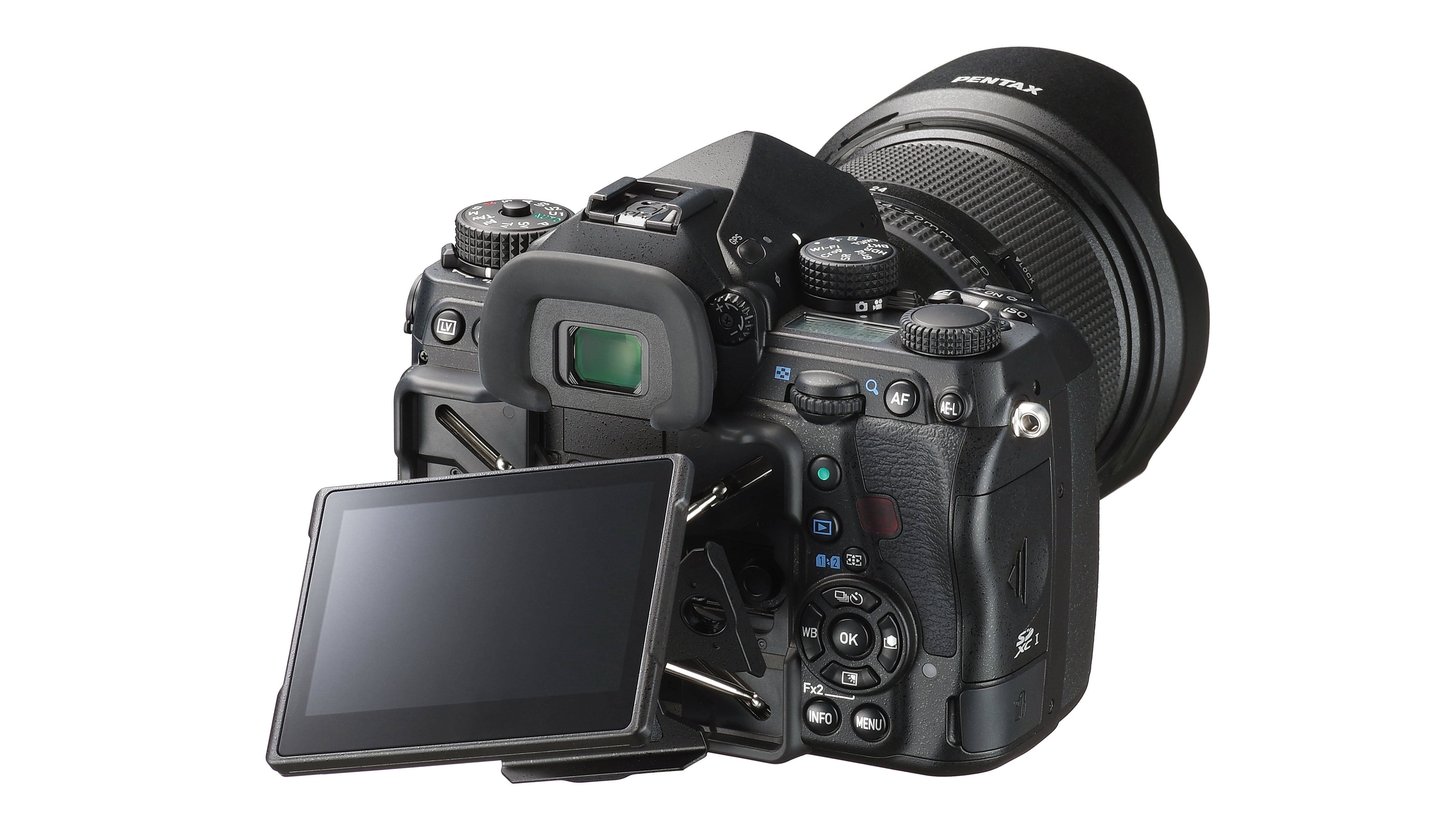Olympus OM-D E-M5 Mark III: what we expect
Olympus' most important camera yet, the third iteration of the groundbreaking E-M5 needs to pull out all the stops

Founded in October 1919, this year sees Olympus putting on a party hat and celebrating its 100th birthday. And the company looks to be celebrating its centenary by releasing the long-awaited Olympus OM-D E-M5 Mark III during its birthday month.
The Olympus OM-D E-M5 Mark III will be the third iteration of the groundbreaking original OM-D camera, which spearheaded the mirrorless revolution for advanced and even professional users when it launched way back in February 2012. However, a whole lot has changed in the camera industry since then.
Where once Olympus and Panasonic stood alone in the mirrorless marketplace, now every major players has gone all-in – and the big thing in 2019 is full-frame mirrorless, with even Panasonic shifting focus away from Micro Four Thirds, leaving Olympus as the sole champion of the smaller format.
The once-capable 16MP sensor in the E-M5 Mark II is now very long in the tooth. And, with modern rivals like the Canon EOS RP offering 26MP full-frame imaging and 4K video for just £1,399, the mid-range mirrorless market is no longer Olympus' plaything.
So the big question is exactly what kind of tech the latest and greatest OM-D E-M5 model will be packing – and how it will balance its position within the OM-D hierarchy. After all, it has the entry-level Olympus OM-D E-M10 Mark III on one side, and the professional-grade Olympus OM-D E-M1X on the other.
This puts the OM-D E-M5 Mark III in the tricky position of being the middle brother of the OM-D family, but releasing after the latest version of its bigger brother. This means that it has to be significantly better than the E-M10 Mark III while not outperforming the E-M1X (which, as the flagship camera, is set to retain exclusive rights to certain pro-grade features).
So how will all this affect the specs, and what should (and shouldn’t) we expect to see in the new model? Here’s our rundown of what the Olympus OM-D E-M5 Mark III will likely look like…
1. No full-frame sensor

We already know that Olympus is committed to Micro Four Thirds and has no plans to move into full-frame imaging. The company has stated time and again since Photokina 2018 that it remains dedicated to the smaller sensor system – and the release of the E-M1X earlier this year only confirms that.
Read more: The 10 cheapest full-frame cameras right now
Indeed, the company sees its rivals' rush to move to full-frame mirrorless cameras as being to its advantage. Much like Fuji, it doesn't need to swim in full-frame waters when there are less sharks in the crop sensor sea.
So, while it would certainly be a dramatic way to mark Olympus’ 100th birthday, the answer is no – the E-M5 Mark III will not feature a full-frame sensor. The question, then, is what kind of sensor will it have?
2. Same 20.4MP sensor as OM-D E-M1X

The Olympus OM-D E-M5 Mark III's sensor will still be a Micro Four Thirds one, then, but how many megapixels will it boast? While we’ve heard for years that the smaller format probably maxes out at 24MP, the Sharp 8K Video Camera boasts a proprietary 33MP sensor (albeit in a 16:9 ratio, unlike Olympus' traditional 4:3), providing a new ceiling for the standard.
Read more: Panasonic GH5S review
With Olympus' R&D team having redoubled its efforts on sensor development in recent years, researching technologies like multi-storied photodiode CMOS sensors, the question is: would the executives be willing to put a higher resolution sensor in the OM-D E-M5 Mark III when it sits below the OM-D E-M1X in the the product line-up?
As noted earlier, the E-M1X rules the OM-D roost because it’s the professional-level model. While the new E-M5 would obviously have access to the same (as well as superior) technology, the nature of the product line has traditionally prevented junior models possessing more advanced specs than their seniors.
In all likelihood, then, the OM-D E-M5 Mark III will benefit from a similar, if not identical, 20.4MP sensor to that of the E-M1 Mark II and E-M1X – unless Olympus does a Panasonic and does a massive zig where everybody expects it to zag.
The GH5S came to the party bearing a humble (even by Micro Four Thirds standards) 10.2MP sensor. Of course, Panasonic did this for a specific reason: the GH5S, as a specialist video-oriented camera, sacrificed pixel count for larger photo sites, resulting in dramatically improved low-light performance at the expense of photographic resolution.
We don’t expect Olympus to do anything quite so dramatic. The company has stated that it’s dedicated to the stills market, so there’s no chance of the OM-D E-M5 Mark III becoming the 'video OM-D'. Then again, the Micro Four Thirds format is built on thinking outside the box, so the corporation may pull something out of left field.
3. Dual Native ISO

One longstanding criticism of Micro Four Thirds cameras has concerned high-ISO performance, and many have seen them as therefore unable to compete with full-frame systems. Panasonic managed to sidestep these criticisms on the GH5S by not only using a sensor with larger photosites than the ones inside other Lumix models, but also by incorporating a Dual Native ISO option.
This latter feature is made possible through the use of two read-out circuits per pixel, rather than the usual one. This gives the camera more flexibility when amplifying the signal, which, in turn, helps to deliver cleaner footage at higher sensitivities.
We’re confident that Olympus has been eyeing this technology with great interest, and we think it would make a great addition to the OM-D E-M5 Mark III's spec sheet.
4. Phase-detect AF, but single card slot and no Pro Capture mode

Remember that recurring theme about the enthusiast OM-D E-M5 line being “big brothered” out of having the professional features of the OM-D E-M1 series? Well, that rules out a few key specs that consumers have been clamoring for.
The latest reports are that the camera will feature an almost identical 20.4MP sensor as the one found in the flagship cameras – which would also incorporate the phase detect autofocus system, something that had previously been the sole preserve of the E-M1s.
Pro Capture, though, will likely remain exclusive to the flagship bodies (the clue is in the word 'pro'). Sadly this means that Olympus’ brilliant burst technology – which captures 15 frames before you fully depress the shutter-release button, in addition to all the frames you take afterwards – won’t be available to the OM-D E-M5 Mark III.
Likewise, the likelihood is that the next E-M5 model will not have a second memory card slot. Though we wouldn't be shocked if it does materialize with dual slots, especially if Olympus pushes the boat out in terms of video capabilities…
5. 6K video with Log

While 4K video has become the de facto video requirement, Olympus’ video-oriented counterparts at Panasonic have already got 6K functionality. And indeed, 8K is the next big thing in video – as attested by the Sharp 8K Video Camera. However, don’t expect Olympus – focused as it is on stills – to be looking at 8K any time soon.
Still, the OM-D E-M5 Mark II was launched with a lot of fanfare about its lineup-leading video specs – which weren’t considered the E-M1’s domain. So it wouldn't be unreasonable to expect renewed focus on cutting edge video, and even some degree of 6K performance; in particular the GH5’s 6K Photo Mode, which enables you to shoot 6K video clips and then extract 18MP still frames. This would be a very tempting feature that doesn’t tread on the OM-D E-M1X’ toes.
Regardless of whether we get the 6K garnishing, we certainly hope that Olympus gives us 4K video with the Log profile seen in the two E-M1 models. Oh, and a headphone jack wouldn’t go amiss this time (which was only available to the OM-D E-M5 Mark II via the HLD-8G grip).
6. No optional paid-for Log mode

Following Panasonic’s lead in offering log modes is something that Olympus needs to do, but charging consumers for the privilege of using it is something it definitely doesn’t. Indeed, Panasonic’s decision to make its V-log an additional in-body purchase opens a troubling can of worms – one that is painfully present on the full-frame Panasonic Lumix S1 and S1R cameras.
On one hand, this could be seen as a modular and future-proof design. New features could be introduced with firmware updates that enable users to purchase additional functionality, prolonging the lifespan of devices. It also suggests that, for instance, a next-generation E-M10 could come with all the same features of a next-gen E-M1, but with most of them locked as standard; consumers could thus purchase the base camera for a much cheaper price, and buy additional features ad hoc.
On the other hand, this could also be seen as selling a product that strong-arms customers into paying extra to access features that it already possesses. We can’t see Olympus adopting this approach, as the OM-D line has always been about offering premium products rather than penny pinching or competing on price. Consider this a bullet dodged for the E-M5 Mark III.
7. 50MP Hi Res Shot, no handheld

High Res Shot mode debuted on the OM-D E-M5 Mark II, giving the 16.1MP camera the ability to output a 40MP image. This was possible thanks to the stellar in-body stabilization, which enabled the camera to take eight separate images by shifting the sensor half a pixel each time, before stitching them together to create a single, high-resolution 40MP composite.
With its 20.4MP sensor, the OM-D E-M1X pushed this to a whopping 80MP while on a tripod, and 50MP while handheld, giving the Micro Four Thirds camera a resolution on par with medium-format systems.
However, the handheld capability is only made possible by the E-M1X' dual processors providing the extra horsepower. Likewise, that extra oomph is what enables the X to create an 80MP image; the older E-M1 Mark II could only output a High Res Shot of 50MP.
We expect that the E-M5 Mark III will possess that same 50MP ceiling, with the higher resolution output and handheld shooting ability remaining exclusive to the E-M1X and its twin processors.
8. Single TruePic IX processor

The Olympus OM-D E-M1X boasts a pair of quad-core TruePic VIII processors – double that seen in the older flagship camera, the E-M1 Mark II. The four-year-old E-M5 Mark II, by comparison, had the TruePic VII processor.
Certainly it would be nice for Olympus to give us a shiny new TruePic IX processor. After all, the TruePic VIII debuted with the E-M1 Mark II back in 2016. Yes, if the company was going to incorporate a new CPU, putting it in the E-M1X might have made more sense. However, putting two brand-new processors in the camera would have been an expensive inclusion – so it actually makes more sense to debut a new sensor in the E-M5 Mark III.
While a TruePic IX would deliver tangible benefits – improvements in operating speed, autofocus efficiency, frame-rates and buffering – it likely won't enable the E-M5 Mark III to incorporate some of the E-M1X' features that were made possible by dual processing.
That being the case, don't expect to see things like Live ND simulation and the Intelligent Subject Detect tracking system, which uses AI/deep learning to recognize targets including automobiles, trains and airplanes. Though we'd love to be proven wrong, and for the TruePix IX to blow us away with these tricks!
9. Fully articulating screen – or a hybrid

The Fujifilm X-T100 boasts a three-direction tilting LCD, which combines the fully articulated design with levered tilting to offer the best of both worlds. The Pentax K-1 and K-1 Mark II, meanwhile, boast an incredibly inventive Flexible Tilt-type screen armature that offers innovation, if not necessarily practicality. We can definitely see Olympus having spent a few R&D pennies on developing its own take on Fujifilm’s hybrid design.
Brand loyalties notwithstanding, photographers fall into one of two categories: tilting screen or fully articulated screen. Sometimes specs are completely secondary when choosing a new camera, as street photography purists demand tilting LCDs while vloggers can’t live without a flip-out screen. The original OM-D E-M5 had the former, while the Mark II model had the latter.
So what will we get on the OM-D E-M5 Mark III? We reckon it will have the same fully articulated screen as its predecessor (along with the OM-D E-M1 Mark II and PEN-F). Of course, there's a possibility that Olympus will attempt a third option, with an industrious new design along the same lines as those seen on Fujifilm's and Pentax's most recent models.
10. Similar price tag to the PEN-F (RIP)

The original OM-D E-M5 was priced £999.99/$1299.99 at its 2012 launch, while the OM-D E-M5 Mark II launched at £899.99/$10.99.99 three years later – a price it has held ever since. While a similar price point would therefore seem par for the course, the pricing of the OM-D E-M1 line may have upset the scales a little bit.
When the OM-D E-M1X launched in March 2019, Olympus came under a lot of fire for its £2,799/£2,999 price tag. A dramatic rise from the December 2016 price of £1,849/$1,999 for the E-M1 Mark II, and a huge leap from the original OM-D E-M1, which released at £1,299/$1,399 in 2013. So it’s clear that the cost of the company’s higher end models has gone up quite a bit.
While Olympus would no doubt prefer to keep a comma out of the price of the OM-D E-M5 Mark III, we’re optimistically looking at a similar £1,099/$999 RRP as the discontinued Olympus PEN-F – probably creeping up to £1,199/$1,099.
That said, with Brexit looming, pricing in the UK (and potentially Europe) is increasingly volatile. And, with the Canon EOS RP offering full-frame stills and 4K for just £1,399/$1,299, it's dangerous for Olympus to venture too much higher with the price point of the E-M5 Mark III.
Read more:
Olympus OM-D E-M5 Mark III image leaks: 'E-M1X features for a fraction of the price'
The best Olympus cameras in 2019
The best Micro Four Thirds lenses for your Olympus or Panasonic camera
Get the Digital Camera World Newsletter
The best camera deals, reviews, product advice, and unmissable photography news, direct to your inbox!

James has 22 years experience as a journalist, serving as editor of Digital Camera World for 6 of them. He started working in the photography industry in 2014, product testing and shooting ad campaigns for Olympus, as well as clients like Aston Martin Racing, Elinchrom and L'Oréal. An Olympus / OM System, Canon and Hasselblad shooter, he has a wealth of knowledge on cameras of all makes – and he loves instant cameras, too.
